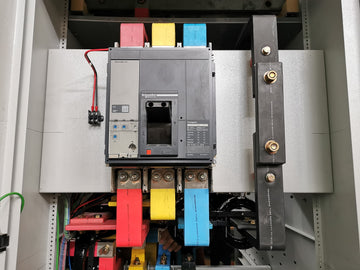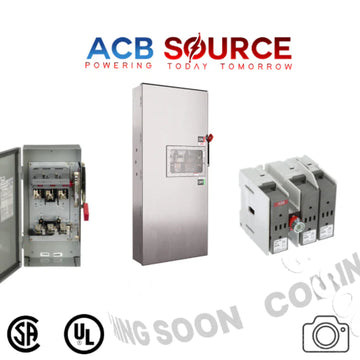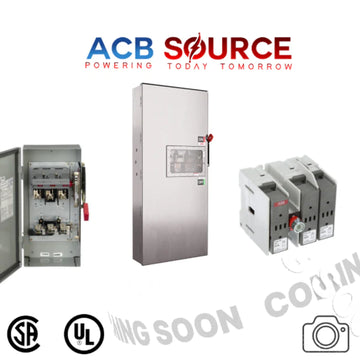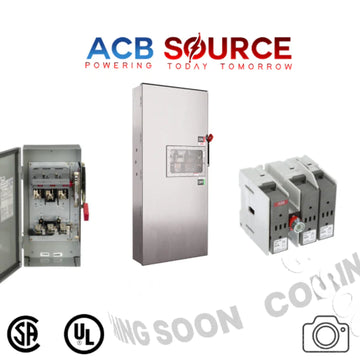In the world of electrical systems, ensuring safety and reliability is paramount. Circuit breakers play a crucial role in safeguarding electrical circuits and devices from overloads, short circuits, and other electrical faults. For those new to the field, understanding the different types of circuit breakers and their applications is essential. This beginner's guide aims to shed light on circuit breaker types, their mechanisms, and where they find use in various settings.
Understanding the Basics
What is a Circuit Breaker?
A circuit breaker is an electrical switch designed to protect an electrical circuit from damage caused by excess current. It functions as an automatic switch that can interrupt the flow of electricity when it detects a fault. This interruption prevents potential damage to equipment, appliances, and wiring, as well as mitigates the risk of fire.
How Does a Circuit Breaker Work?
At its core, a circuit breaker operates on the principle of electromagnetic or thermal-magnetic tripping mechanisms. When current exceeds the predetermined safe limit, the breaker trips, interrupting the circuit and stopping the flow of electricity. This rapid response helps prevent overheating and potential electrical fires.
Common Types of Circuit Breakers
- Miniature Circuit Breakers (MCBs)
MCBs are widely used in residential and commercial applications. They are compact, cost-effective, and designed to protect against overloads and short circuits. MCBs are often installed in electrical distribution boards and offer a convenient way to manually turn off the power in case of a fault.
- Molded Case Circuit Breakers (MCCBs)
MCCBs are larger than MCBs and are commonly employed in industrial and commercial settings. They provide protection against overloads, short circuits, and can often be adjusted to suit different current ratings. MCCBs are notable for their robust construction and ability to handle higher currents.
- Air Circuit Breakers (ACBs)
ACBs are designed for high-voltage applications, typically found in large industrial facilities and power distribution systems. They use air as the arc-quenching medium and offer advanced features such as adjustable trip settings and sophisticated protection mechanisms. ACBs are ideal for applications where higher interrupting capacities are required.
- Oil Circuit Breakers
While less common today, oil circuit breakers were historically used for high-voltage applications. They utilize oil as an arc-quenching medium. When the circuit breaker interrupts the current, the oil extinguishes the arc, preventing damage to the electrical system. However, due to environmental concerns and the development of alternative technologies, oil circuit breakers are being phased out.
- Vacuum Circuit Breakers (VCBs)
VCBs are widely used in medium-voltage applications and have become popular due to their compact design and low maintenance requirements. They use a vacuum as the arc-quenching medium, ensuring a quick and efficient interruption of the current. VCBs are known for their reliability and ability to withstand frequent operations.
- SF6 Circuit Breakers
Sulfur hexafluoride (SF6) circuit breakers are commonly used in high-voltage applications. These breakers utilize SF6 gas as the insulating and arc-quenching medium. SF6 circuit breakers are known for their high interrupting capacity and are often employed in power transmission and distribution systems.
Factors to Consider When Choosing a Circuit Breaker
- Voltage Rating
Circuit breakers are designed for specific voltage levels. It's crucial to choose a breaker with a voltage rating that matches the electrical system it will protect. Using a breaker with the wrong voltage rating can compromise safety and performance.
- Current Rating
The current rating of a circuit breaker indicates the maximum current it can handle without tripping. When selecting a circuit breaker, ensure that its current rating aligns with the load requirements of the electrical circuit.
- Breaking Capacity
Breaking capacity refers to the maximum fault current a circuit breaker can safely interrupt. This is a critical consideration, especially in environments where high fault currents are possible. Choosing a breaker with an adequate breaking capacity is essential for safety.
- Tripping Characteristics
Circuit breakers can have different tripping characteristics, such as thermal, magnetic, or a combination of both. Understanding these characteristics helps in selecting a breaker that suits the specific requirements of the circuit it protects.
- Environmental Conditions
Consider the environmental conditions where the circuit breaker will be installed. Factors such as temperature, humidity, and altitude can affect the performance of certain types of circuit breakers. Choose a breaker that is suitable for the given environmental conditions.
Applications of Circuit Breakers
- Residential Buildings
In homes, MCBs are commonly used to protect individual circuits such as lighting and power outlets. They provide a convenient way to isolate a specific circuit in case of a fault without affecting the entire electrical system.
- Commercial Establishments
MCCBs find extensive use in commercial buildings to protect larger circuits and equipment. Their ability to handle higher currents makes them suitable for applications where increased power demands are common.
- Industrial Facilities
In industrial settings, where power demands are substantial, ACBs and other high-capacity circuit breakers are employed. These breakers ensure the protection of critical equipment and machinery, minimizing downtime due to electrical faults.
- Power Distribution Networks
High-voltage circuit breakers like VCBs and SF6 circuit breakers play a pivotal role in power distribution networks. They safeguard the transmission and distribution lines from faults, contributing to the reliability of the entire electrical grid.
Conclusion
As a beginner's guide to circuit breaker types, this overview provides a foundational understanding of the various options available and their applications. From residential MCBs to high-voltage SF6 circuit breakers, each type serves a specific purpose in ensuring electrical safety and system reliability.
When selecting a circuit breaker, it's crucial to consider factors such as voltage and current ratings, breaking capacity, tripping characteristics, and environmental conditions. By understanding these elements, individuals can make informed decisions when choosing the right circuit breaker for a particular application.
In the ever-evolving field of electrical engineering, staying informed about the latest advancements in circuit breaker technology is essential. As technology continues to progress, circuit breakers will likely see further innovations, enhancing their efficiency and performance in protecting electrical systems around the world.







